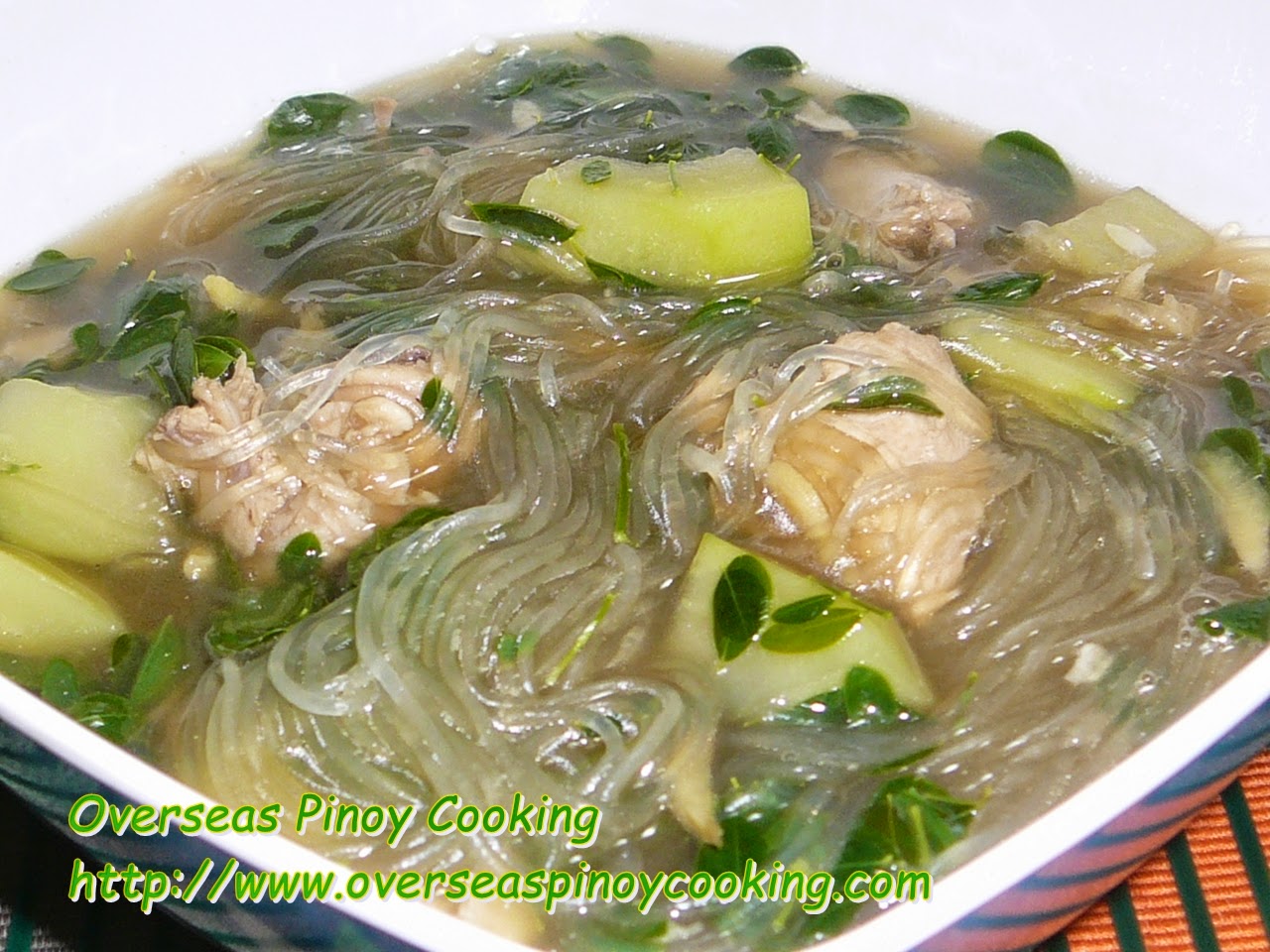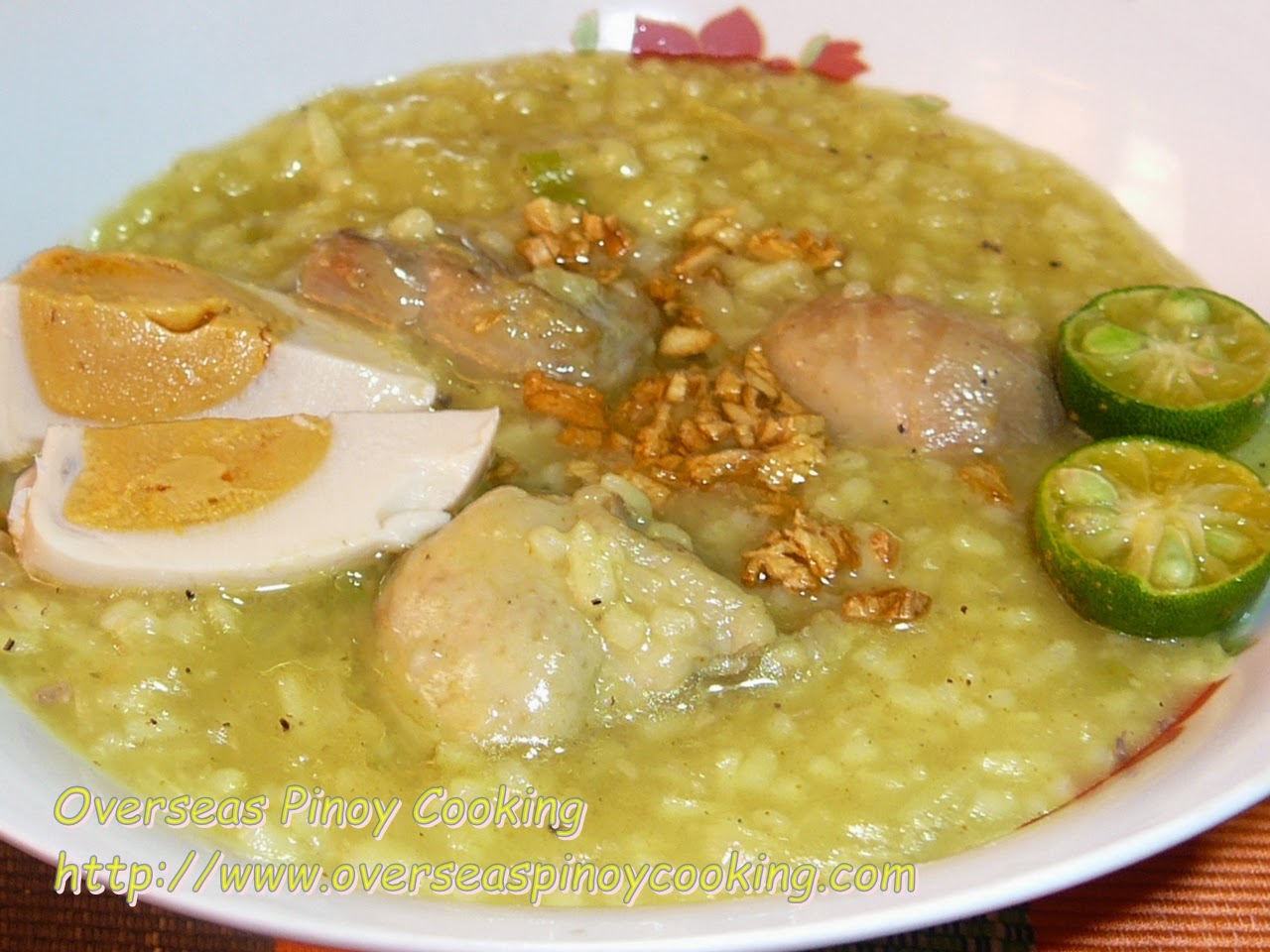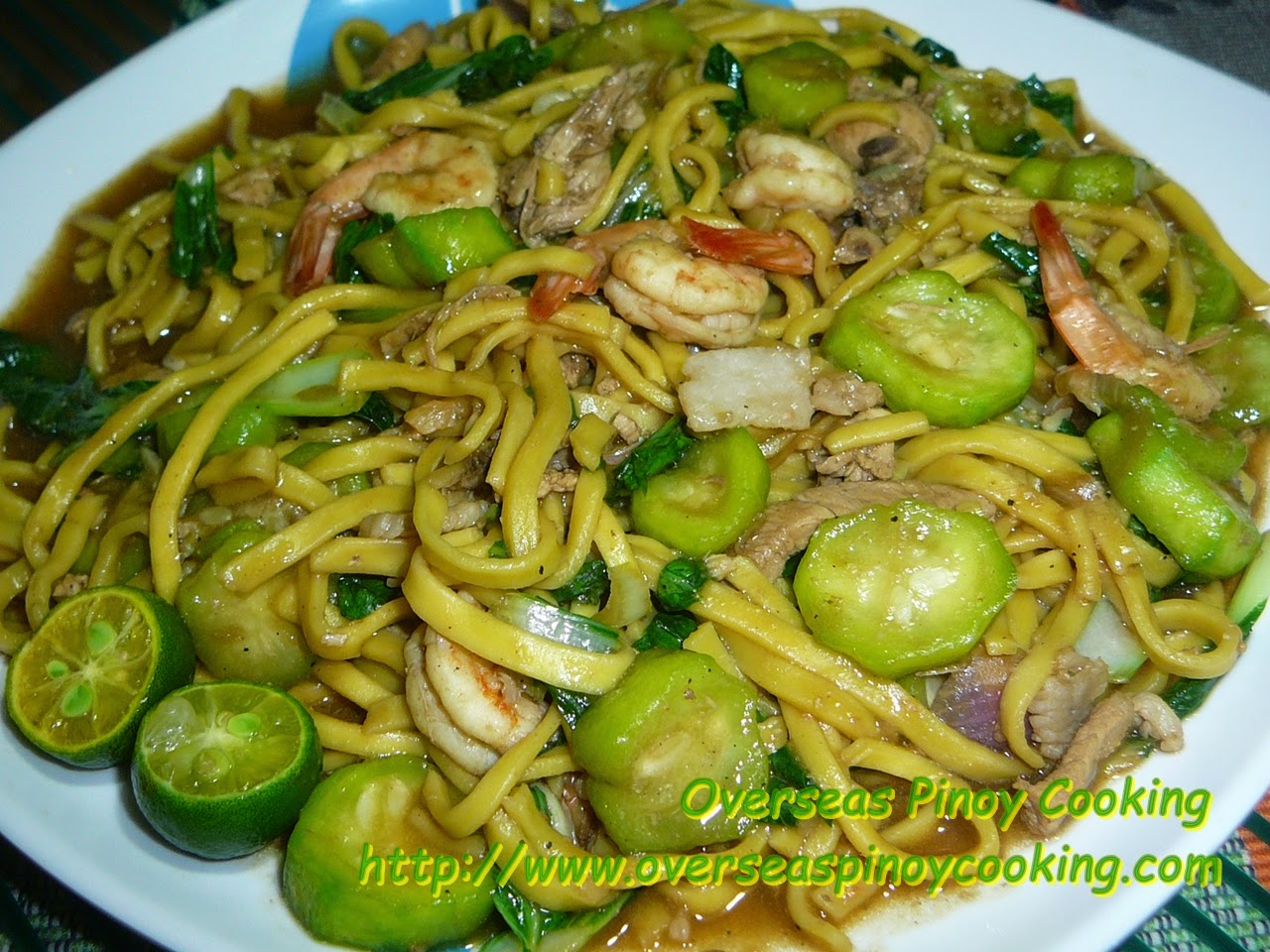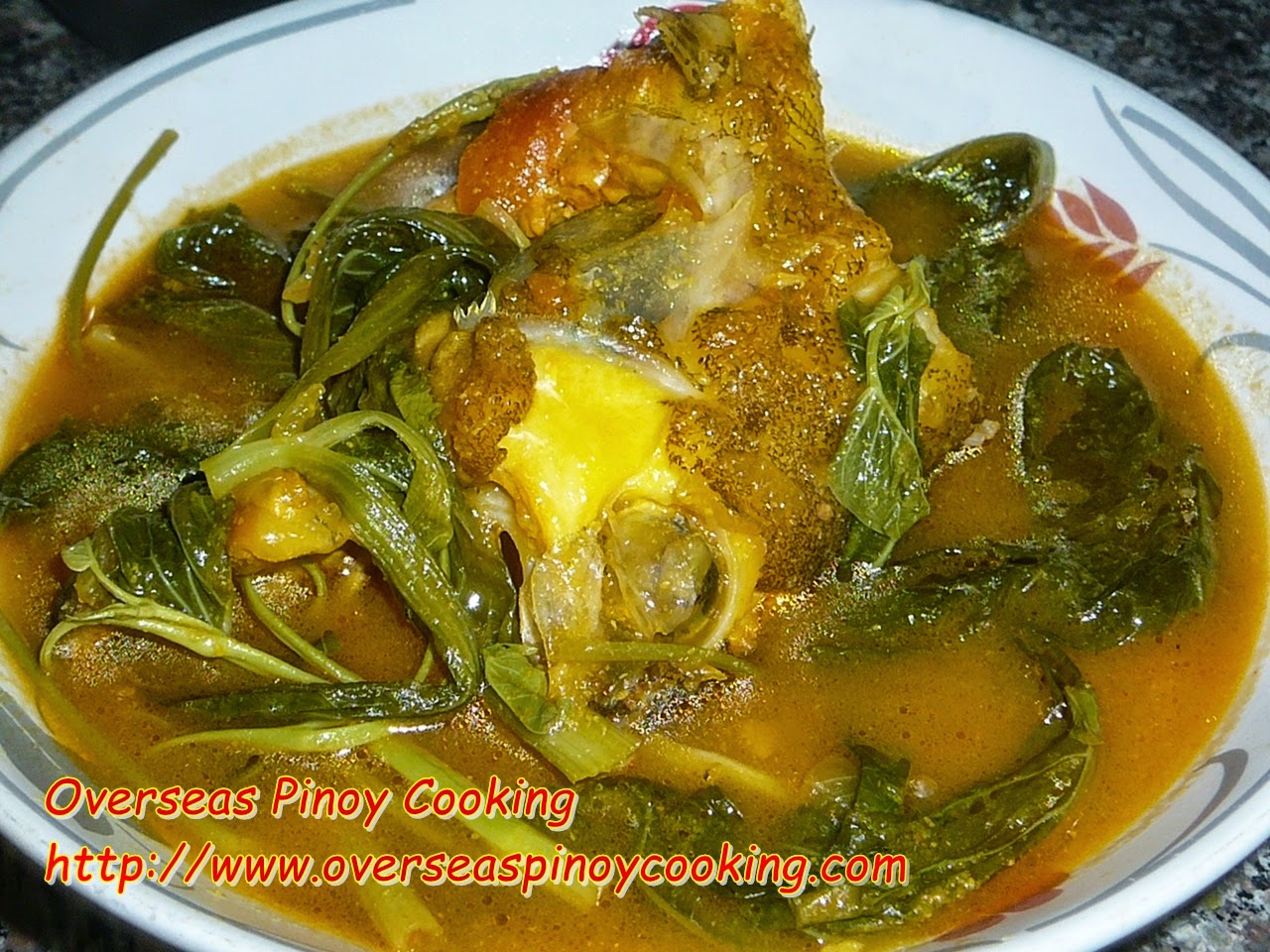Tinolang Manok with Malungay and Sotanghon

Tinolang Manok with Malungay and Sotanghon . One of my favorite version of tinola is with sotanghon. I have posted a couple of tinola dish before, Tinolang Manok with Sotanghon and Chicken with Ampalaya Tendrils and Sotanghon . The addition of sotanghon noodles in a tinola soup make the dish a complete meal, however it is still best eaten and enjoyable with a lot of rice. Malungay and green unripe papaya in a chicken tinola with a lot of ginger is a perfect combination of a chicken soup dish, made more special with the addition of sotanghon noodles. Here is the recipe of my Tinolang Manok with Malungay and Sotanghon . Ingredients: 1 kilo chicken, cut into serving pieces, bone in 150 grams sotanghon noodles, rinsed 1 small size green unripe papaya, skinned cut into wedges 1 bundle malungay leaves, removed from stems 2-3 thumb size ginger, skinned, cut into strips 1/2 head garlic, peeled , crushed, chopped 1 medium size onion, peeled, chopped 3-5 pcs...



